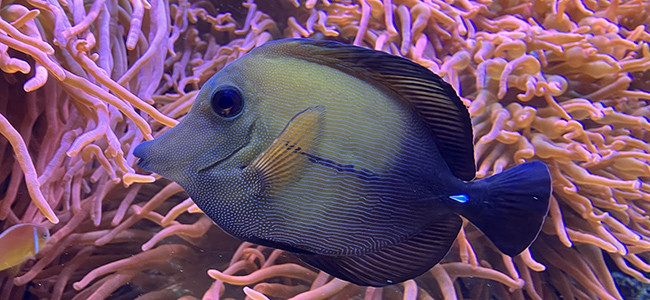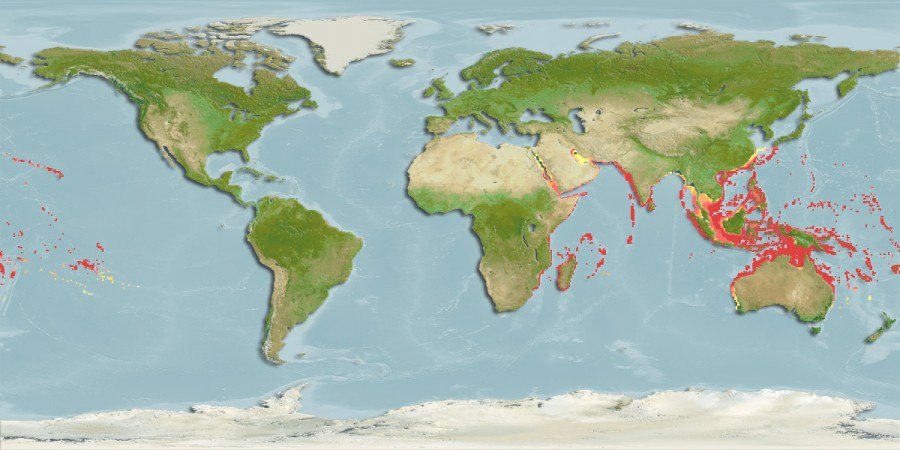Zebrasoma scopas, commonly known as the ‘brown surgeonfish‘ or ‘twotone tang‘, is a marine fish belonging to the family Acanthuridae and the order Perciformes. The genus name ‘Zebrasoma‘ derives from the Latin ‘zebra‘ (stripes) and ‘soma‘ (body), referring to the markings typically present in some species of the genus. The species epithet ‘scopas‘ originates from Greek, meaning ‘dark‘ or ‘gloomy‘, alluding to this species’ dark brown coloration. Zebrasoma scopas is widely distributed across the Indian Ocean and western Pacific, ranging from the coasts of East Africa to Japan and Australia. It inhabits coral reefs and coastal lagoons, favoring areas with abundant coral cover and strong currents, at depths between 2 and 60 meters.
Zebrasoma scopas is a small to medium-sized fish that can reach 15–20 centimeters in length. It has a laterally compressed, disc-shaped body with a relatively large head and a pointed snout. Its coloration ranges from dark brown to olive-gray, often with lighter tones toward the lower part of the body. In most individuals, the posterior body is paler, and the dorsal and anal fins display radial bands that may appear translucent under certain lighting conditions. Faint horizontal stripes of lighter color may also be visible. A distinctive feature of Zebrasoma scopas is the sharp spine or ‘scalpel‘ at the base of the caudal fin, used for defense and to establish hierarchies with other fish. To differentiate it from similar species, such as Zebrasoma desjardinii or Zebrasoma flavescens, one must observe the fin markings and overall body coloration; Zebrasoma desjardinii has more complex patterns with stripes and spots, while Zebrasoma flavescens is bright yellow.
Regarding its feeding habits, Zebrasoma scopas is primarily herbivorous, feeding on a variety of benthic algae, including filamentous, green, and red algae. Its grazing plays an important ecological role in maintaining the balance of coral reef ecosystems by preventing excessive algal growth that could smother corals. It also supplements its diet with small planktonic invertebrates and organic detritus when algae are scarce.
The reproduction of Zebrasoma scopas is oviparous and occurs in groups during spring and summer, coinciding with lunar phases to maximize larval survival. This species reproduces externally: males and females release sperm and eggs simultaneously into the water column, where fertilization occurs. The eggs are pelagic, floating near the ocean surface until they hatch into larvae. These larvae remain planktonic for several weeks before settling on the reef and metamorphosing into juveniles.
An interesting feature of Zebrasoma scopas is its ability to slightly change color depending on its emotional state, health, or environment, an adaptation useful for camouflage against predators or for communication with other fish. Despite its relatively small size, it is known for its territorial behavior and can display aggression toward conspecifics or similar species, particularly in confined spaces such as aquariums. Due to its distinctive appearance and active behavior, Zebrasoma scopas is popular in marine aquaria, though it requires specific care due to its diet and need for ample swimming and foraging space.
Photos:


 from
from